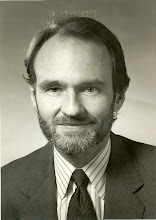The growing mkt view is that US pent-up demand will kick in Q1 and, with a bit of an assist from a recovering E-Z, a Japan where Abe plays the part of the Prince in Sleeping Beauty, and good ‘ol China, which having dodged the great contraction through massive floods of liquidity, comes away from the experience with a smile.
Some of this may be true. But key is that the regulatory cliff is not accounted for, is not priced into Street models; that another four years of rampant interventionism from both the administration and central bank will prove to be corrosive to corporate risk taking. This represents a major potential drag. We are not referring to upcoming congressional negotiations but to something that will be with us notwithstanding the vote: there is no longer a connection between interest rates and corporate investment decisions.
Witness recent January Fed-district manufacturing reads. They have been miserable, headline through the components, especially forward looking components, and especially employment. Most believe these prints are tagged to temporary headwinds. Beg to differ. They are tagged to something structural.
It is true that manufacturing has accounted for only say 12% of jobs growth, recent years; yet past many years we have noticed a respectable correlation between the national manufacturing survey reads and GDP, perhaps something on the order of 70%.
And for US rates? We recommended early Jan that readers look for a contraction in the term structure, 2-30 then 285, 5-10, 110. That spread came in but then opened on last Friday’s better than expected German IFO print and news that E-Z banks would repay ECB loans ahead of schedule. Fine. There is the window, for this or a related strategy.
Robert Craven
Some of this may be true. But key is that the regulatory cliff is not accounted for, is not priced into Street models; that another four years of rampant interventionism from both the administration and central bank will prove to be corrosive to corporate risk taking. This represents a major potential drag. We are not referring to upcoming congressional negotiations but to something that will be with us notwithstanding the vote: there is no longer a connection between interest rates and corporate investment decisions.
Witness recent January Fed-district manufacturing reads. They have been miserable, headline through the components, especially forward looking components, and especially employment. Most believe these prints are tagged to temporary headwinds. Beg to differ. They are tagged to something structural.
It is true that manufacturing has accounted for only say 12% of jobs growth, recent years; yet past many years we have noticed a respectable correlation between the national manufacturing survey reads and GDP, perhaps something on the order of 70%.
And for US rates? We recommended early Jan that readers look for a contraction in the term structure, 2-30 then 285, 5-10, 110. That spread came in but then opened on last Friday’s better than expected German IFO print and news that E-Z banks would repay ECB loans ahead of schedule. Fine. There is the window, for this or a related strategy.
Robert Craven

No comments:
Post a Comment